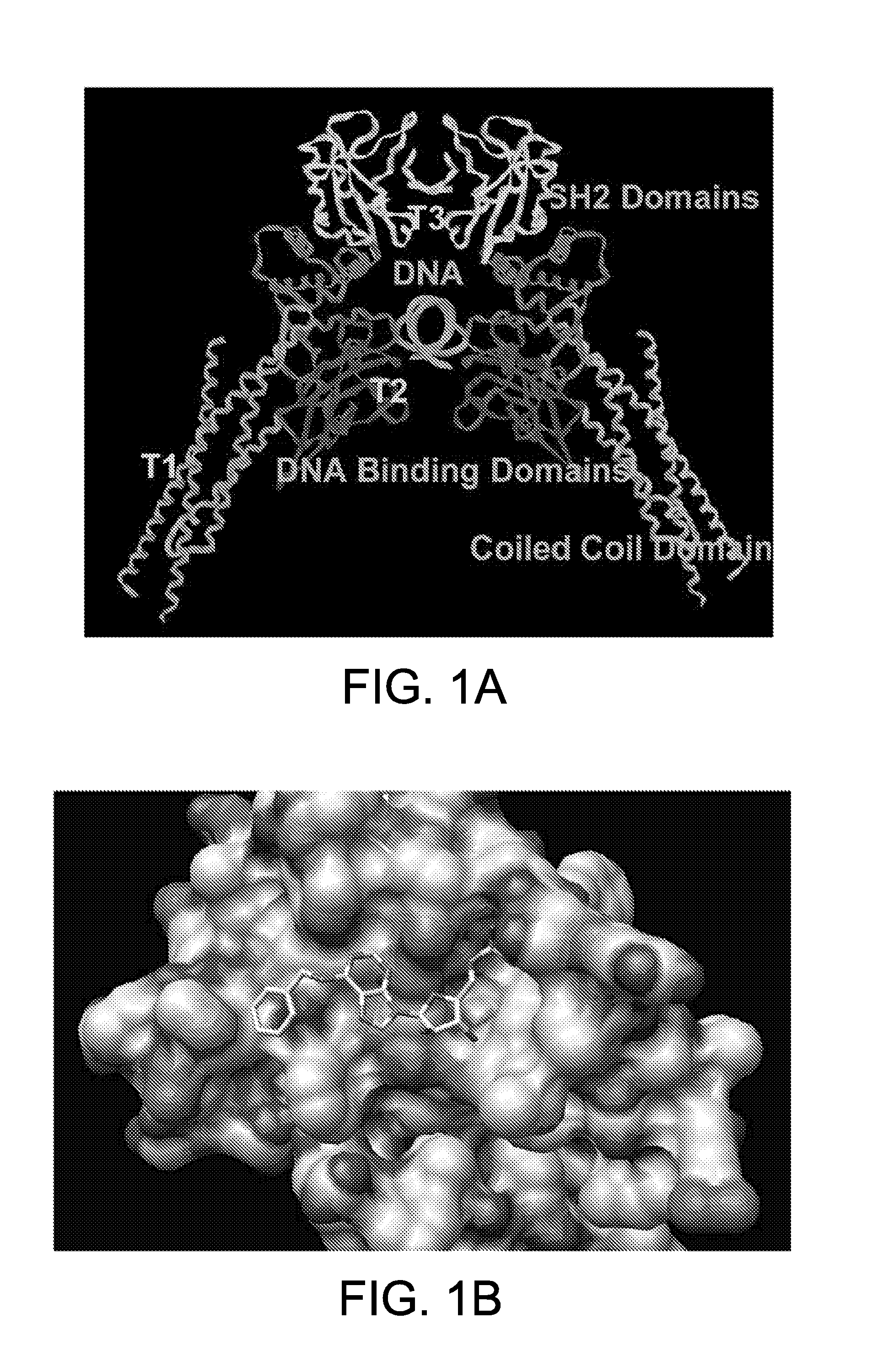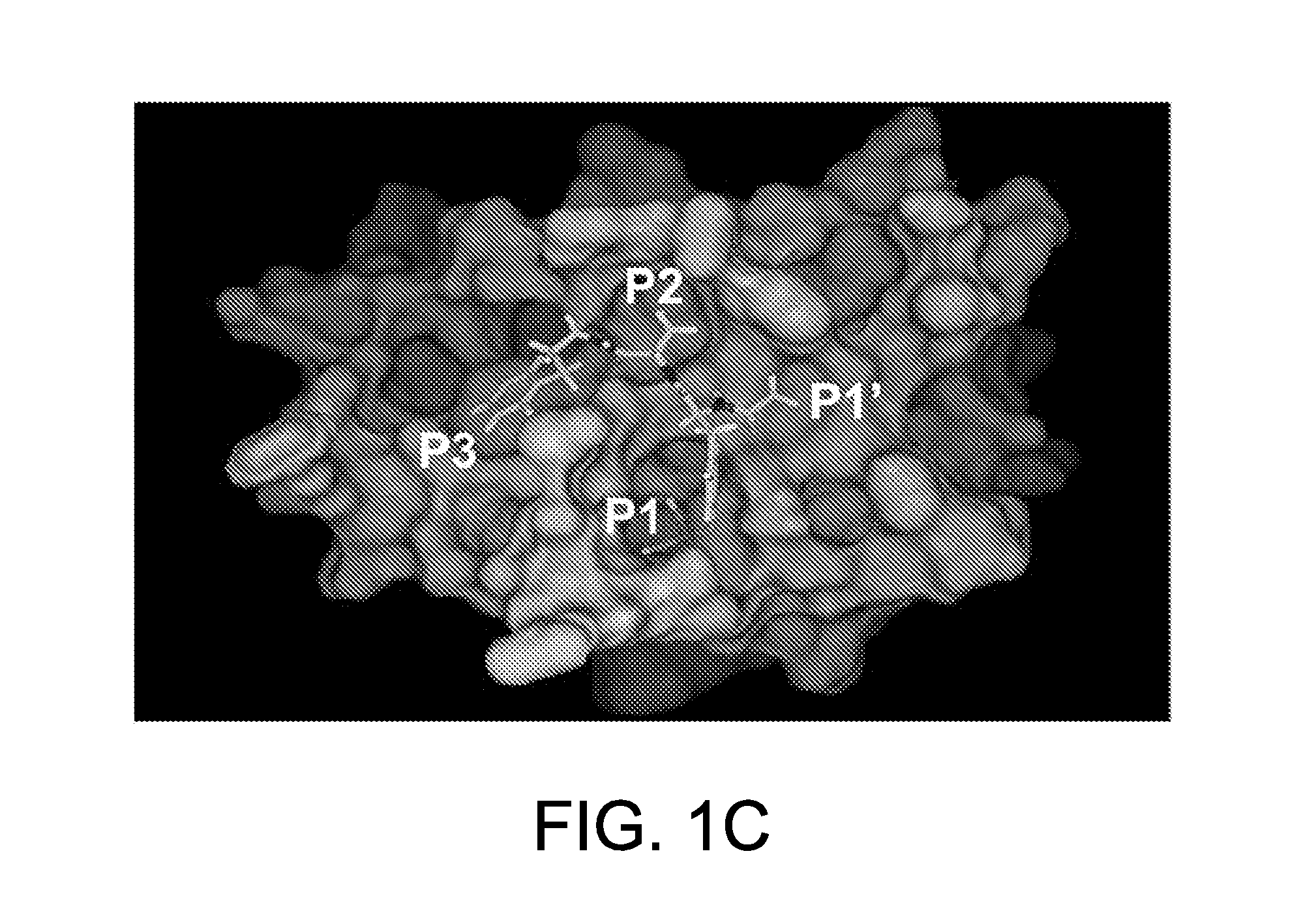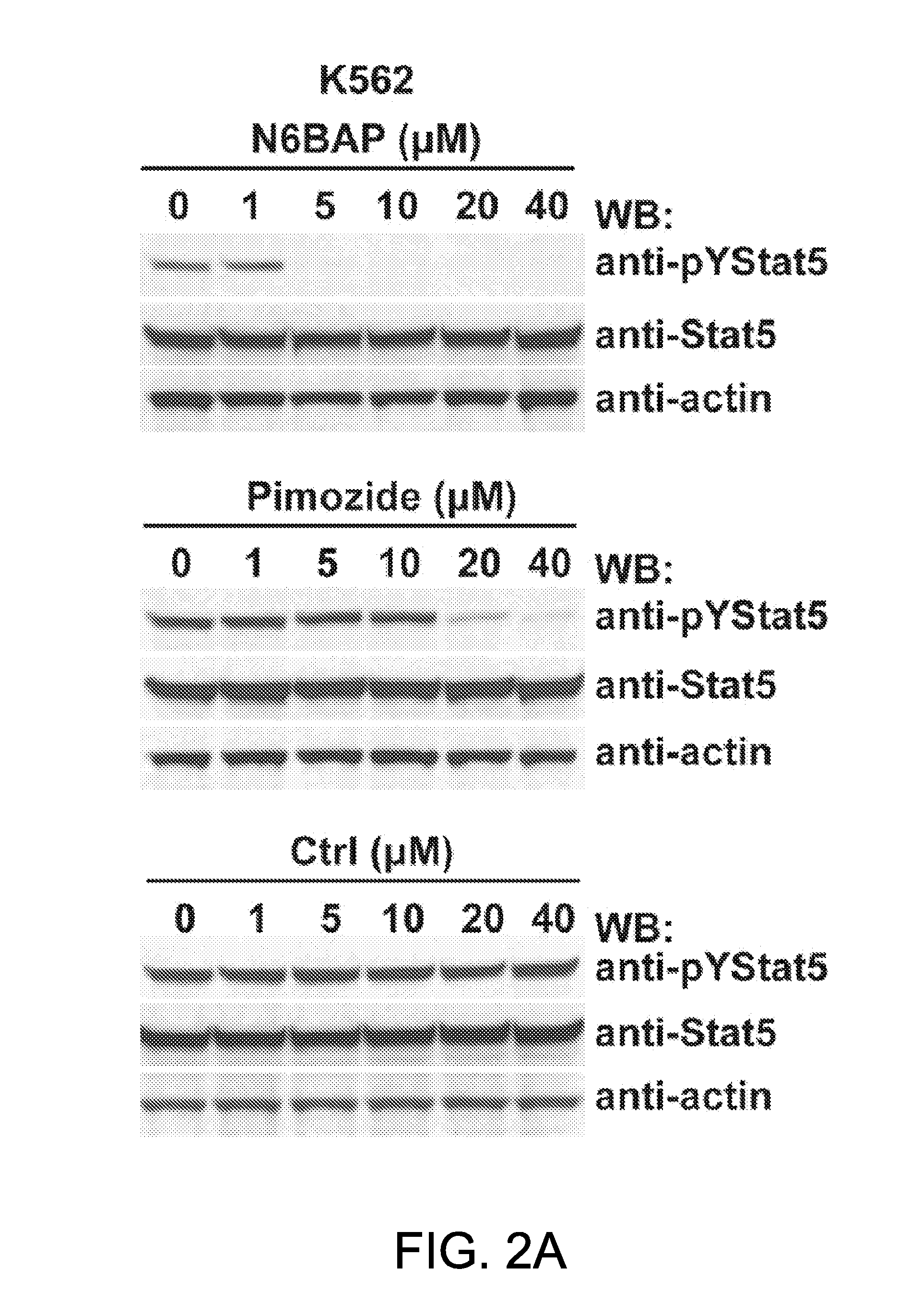Treatment of hematological neoplasms
a hematological neoplasm and prostate cancer technology, applied in the field of prostate cancer and hematological neoplasms, can solve the problems of affecting the p-loop conformation required for imatinib binding, affecting the development of resistance in the target cell,
- Summary
- Abstract
- Description
- Claims
- Application Information
AI Technical Summary
Benefits of technology
Problems solved by technology
Method used
Image
Examples
example 1
N6-Benzyladenosine-5′-Monophosphate Effect on Phosphorylation of Stat5 and BCR-ABL in K562 Cells
[0083]The following experiment demonstrates that N6BAP inhibits constitutive Stat5a / b phosphorylation, but does not affect BCR-ABL phosphorylation, in human chronic myeloid leukemia (K562) cells driven by BCR-ABL. Exponentially growing K562 cells were treated with 5 μM N6BAP or pimozide for 3 h after which the cells were harvested. Pimozide is a Stat5 inhibitor in leukemia cells (Nelson et al., Blood 117:3421-3429, 2011). Cell pellets were solubilized in lysis buffer [10 mM Tris-HCl (pH 7.6), 5 mM EDTA, 50 mM sodium chloride, 30 mM sodium pyrophosphate, 50 mM sodium fluoride, 1 mM sodium orthovanadate, 1% Triton X-100, 1 mM phenylmethylsulfonyl fluoride, 5 μg / ml aprotinin, 1 μg / ml pepstatin A, and 2 μg / ml leupeptin], rotated end-over-end at 4° C. for 60 min, and insoluble material was pelleted at 12,000×g for 30 min at 4° C. The protein concentrations of clarified cell lysates were determ...
example 2
N6-Benzyladenosine-5′-Monophosphate Effect on K562 Cell Viability
[0085]Exponentially growing K562 cells were treated with N6BAP or the control compound C5 for 72 h at 3.1, 6.3, 12.5, 25 and 50 μM indicated concentrations. The cell viability was assessed by MTS (3-(4,5-dimethylthiazolyl-2)-2,5-diphenyl-tetrazolium bromide) metabolic activity assay (CellTiter 96® AQueous Assay kit). The results, shown in FIG. 3, demonstrate that N6BAP reduces the number of viable K562 human leukemia cells.
example 3
N6-Benzyladenosine-5′-Monophosphate Growth Inhibition of Imatinib-resistant K562 Cell Viability
[0086]The K562 parent cell line and an imatinib-resistant K562 line were cultured in the presence of culture medium without any compounds (Ctrl), DMSO (0.1%), the control compound C5 (5 μM) or N6BAP at 5 μM concentration. The cells were harvested at 24, 48, 72 and 96 hours, trypan blue stained and the numbers of viable cells were counted for each time-point. The results are shown in FIGS. 4A and 4B. N6BAP blocked not only the growth of the parental K562 line (FIG. 4A), but also blocked the growth of the imatinib-resistant cell line (FIG. 4B).
PUM
| Property | Measurement | Unit |
|---|---|---|
| time | aaaaa | aaaaa |
| time | aaaaa | aaaaa |
| time | aaaaa | aaaaa |
Abstract
Description
Claims
Application Information
 Login to View More
Login to View More - R&D
- Intellectual Property
- Life Sciences
- Materials
- Tech Scout
- Unparalleled Data Quality
- Higher Quality Content
- 60% Fewer Hallucinations
Browse by: Latest US Patents, China's latest patents, Technical Efficacy Thesaurus, Application Domain, Technology Topic, Popular Technical Reports.
© 2025 PatSnap. All rights reserved.Legal|Privacy policy|Modern Slavery Act Transparency Statement|Sitemap|About US| Contact US: help@patsnap.com



